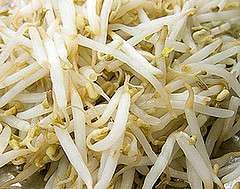Avoid high-risk foods, food-safety expert recommends

It seems that hardly a week goes by without another reported case of some food being blamed for causing people to get sick. Most recently, a national restaurant chain's clover sprouts were linked to a Midwestern outbreak of pathogenic E. coli, and dozens of cases of Campylobacter in four states have been linked to the consumption of raw milk from a Pennsylvania dairy.
As consumers, we start to ask whether any foods are safe to eat.
While it is unlikely that we can completely eliminate the risk of foodborne illness, we can certainly identify a few food items that pose a higher risk of making us ill and avoid them, advises a food-safety expert with Penn State's College of Agricultural Sciences.
"One just needs to look through U.S. Centers for Disease Control reports to see that there are certain foods that show up time and again," said Martin Bucknavage, extension food-safety specialist. "In my opinion, these are foods we certainly should consider removing from our diet if we are interested in reducing our chances of contracting foodborne disease."
Following are a few foods Bucknavage suggests avoiding:
-- Raw sprouts. In the last 15 years, there have been at least 30 reported cases of foodborne illness linked to raw sprouts.
"Pathogenic bacteria come in on the seeds or beans, and during the sprouting process, the conditions are right for these bacteria to multiply," he explained. "Processors will sanitize seeds to remove bacteria, but that measure has not been foolproof."
-- Raw milk. People have consumed raw milk for ages, but from time to time, pathogenic bacteria make their way into the milk, Bucknavage noted.
"In the recent outbreak of foodborne illness related to raw milk sold in southern Pennsylvania, 77 people became infected by Campylobacter, which will cause severe diarrheal conditions for as long as a week or more."
Bucknavage conceded that there are avid proponents of drinking raw milk, who point to the fresh taste and the perceived health benefits.
"However, these health benefits have not been scientifically proven, and the working part of the cow, the udders, are close to the ground and can become contaminated with pathogenic organisms such as Salmonella, Campylobacter, Listeria and E. coli," he said.
"While most of those who sell raw milk keep the dairy environment as clean as they can and regularly test the health of the cows, a long history of outbreaks shows that there is a real risk of dangerous bacteria making their way into milk. This is why pasteurization became a standard practice in the late 1800s."
-- Raw oysters. These are another food that has a loyal following, Bucknavage pointed out. But he explained that oysters are filter feeders and can capture pathogenic bacteria and viruses if they are harvested in contaminated waters.
"A process such as depuration -- allowing oysters to live in cleaned water for a period of time -- can help, but use of this practice is limited," he said.
-- Undercooked ground beef. While some people undercook hamburgers intentionally, the majority do it because they do not use the correct endpoint for cooking, according to Bucknavage. They should measure the recommended internal temperature of 160 F using a meat thermometer.
"It would be fair to say that most people measure whether something is cooked by visual evaluation -- the lack of pink color," he said. "But this is an unreliable method.
"Some people will point out that they eat steak with pink in the middle. But this is different than hamburger. In the process of making hamburger, the meat is ground, and the exterior parts where the bacteria reside are mixed throughout the meat. Because of this, we need to achieve a higher cooking temperature in the center of the meat."
Chicken is another example of a food that often is undercooked, whether on purpose or by accident, Bucknavage lamented. Poultry has been shown to have a high prevalence, or contamination rate, of Campylobacter, he noted.
"To properly cook poultry, an internal temperature of 165 degrees Fahrenheit or higher is required," he said. "Otherwise, organisms such as Campylobacter can survive."
Along with avoiding high-risk foods, it is also important to practice effective cleaning and sanitizing of food-preparation surfaces and cooking utensils, Bucknavage said, as well as storing food under proper conditions. "Doing this, we can go a long way in protecting ourselves and our families from contracting foodborne illness."

















